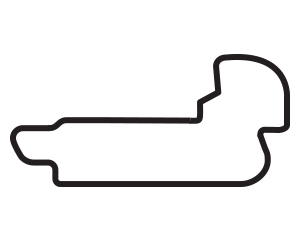Similarities Help F2 Drivers Make Transition to INDYCAR SERIES
MAY 29, 2024
INDY NXT by Firestone continues to promote a steady flow of talented drivers to the NTT INDYCAR SERIES, a job INDYCAR’s development series has done better than any championship for nearly four decades. But a number of drivers also have recently followed another path to North America’s premier open-wheel series.
They’ve competed in FIA Formula 2, the last step before Formula One, and then have continued their racing careers in the NTT INDYCAR SERIES. Among the talents who have taken this path in the last three years are the last two series Rookies of the Year, Christian Lundgaard of Rahal Letterman Lanigan and Marcus Armstrong of Chip Ganassi Racing. Others who have gone from F2 to full-time INDYCAR SERIES rides since 2021 include Callum Ilott and Theo Pourchaire.
Full-time NTT INDYCAR SERIES drivers Marcus Ericsson, Santino Ferrucci, Romain Grosjean and Alexander Rossi also are earlier veterans of full or nearly complete F2 seasons.
All the recent F2 converts have produced strong results, including Pourchaire, who finished 11th in his series debut in the Acura Grand Prix of Long Beach in April. Maybe there’s something to be said about recent F2 drivers making a quick adaptation to INDYCAR SERIES machinery.
“A lot of the parts on the cars are the same because they’re both built by Dallara,” Lundgaard said.
An NTT INDYCAR SERIES car weighs 1,700 pounds minimum on road and street courses, without the driver and fuel. A 2024-spec F2 car, which doesn’t race on ovals, weighs 1,753 pounds minimum with driver and fuel.
The vehicle weights aren’t the only similarities. The lack of power steering on both cars leads to quick familiarity.
“To be honest they're pretty similar,” Armstrong said. “I feel like on a street circuit, they're not too different. INDYCAR, I think has a bit more power, a bit more torque, so you get the feeling of having more wheelspin out of the corners and things like that, which from the nature of the car, really just a lot of torque, and there's no turbo lag.”
Armstrong, driver of the No. 11 Ridgeline Lubricants Chip Ganassi Racing Honda, said the physical nature of the two cars isn’t that different, but an INDYCAR SERIES machine is far more agile. Armstrong said driving in the NTT INDYCAR SERIES is a bit faster, and sliding the car is much more predictable. In F2, he said, if a driver is “sliding the car, they’re going backwards.”
Armstrong attributes that sensation to the tires. The Pirelli tires used in F2 don’t tolerate sliding as well as the Firestone Firehawks used in the NTT INDYCAR SERIES, so F2 drivers are forced to be more pinpoint with steering and braking inputs. Armstrong also said the Firestone tire is much nicer to drive because it is less heat-sensitive.
“Pirelli, the tire has a memory of everything you do to it,” Armstrong said. “So, if you slide it on Lap 1, you know about it on Lap 18. This car (INDYCAR SERIES car) is a bit more robust and more fun to drive because you can actually push.
“No matter how hot it is on a day in Indianapolis on the road course, the tire is never going to behave like it does in Bahrain in F2. You learn a lot about tires in F2, which is very beneficial to Indy. Obviously, there are nuances to how you drive the car, but ultimately, it’s a high-downforce car with high horsepower that is in the same ballpark as INDYCAR. So, you can always draw comparisons.”
Lundgaard agrees he prefers the Firestone Firehawk tire because he can hustle the car and generate temperature by sliding, which reminds him of his formative years in karting when he fell in love with racing.
The quick, successful adaptation of F2 drivers to the INDYCAR SERIES and the series’ ultra-competitive racing have opened the eyes of more F2 drivers to continuing their careers here to compete alongside INDY NXT by Firestone veterans who have become INDYCAR SERIES race winners such as Scott Dixon, Josef Newgarden, Pato O’Ward, Colton Herta, Kyle Kirkwood, Rinus VeeKay and Felix Rosenqvist, Armstrong said.
“The fact is, INDYCAR is cool and is massively competitive, and there’s an attraction to driving a car that you actually can push,” Armstrong said. “There’s a lot of championships out there in the world that you can’t push the car to it’s 100-percent capacity because you’re limited.
“INDYCAR is attractive to the real racers in the world, and in F2 I know people are very curious about it. I’m quite good friends with a lot of drivers there, and a lot of them ask a lot of questions and they’re very curious about it. So, I wouldn’t be surprised to see more Europeans come over, as they should. It’s pretty damn cool.”























